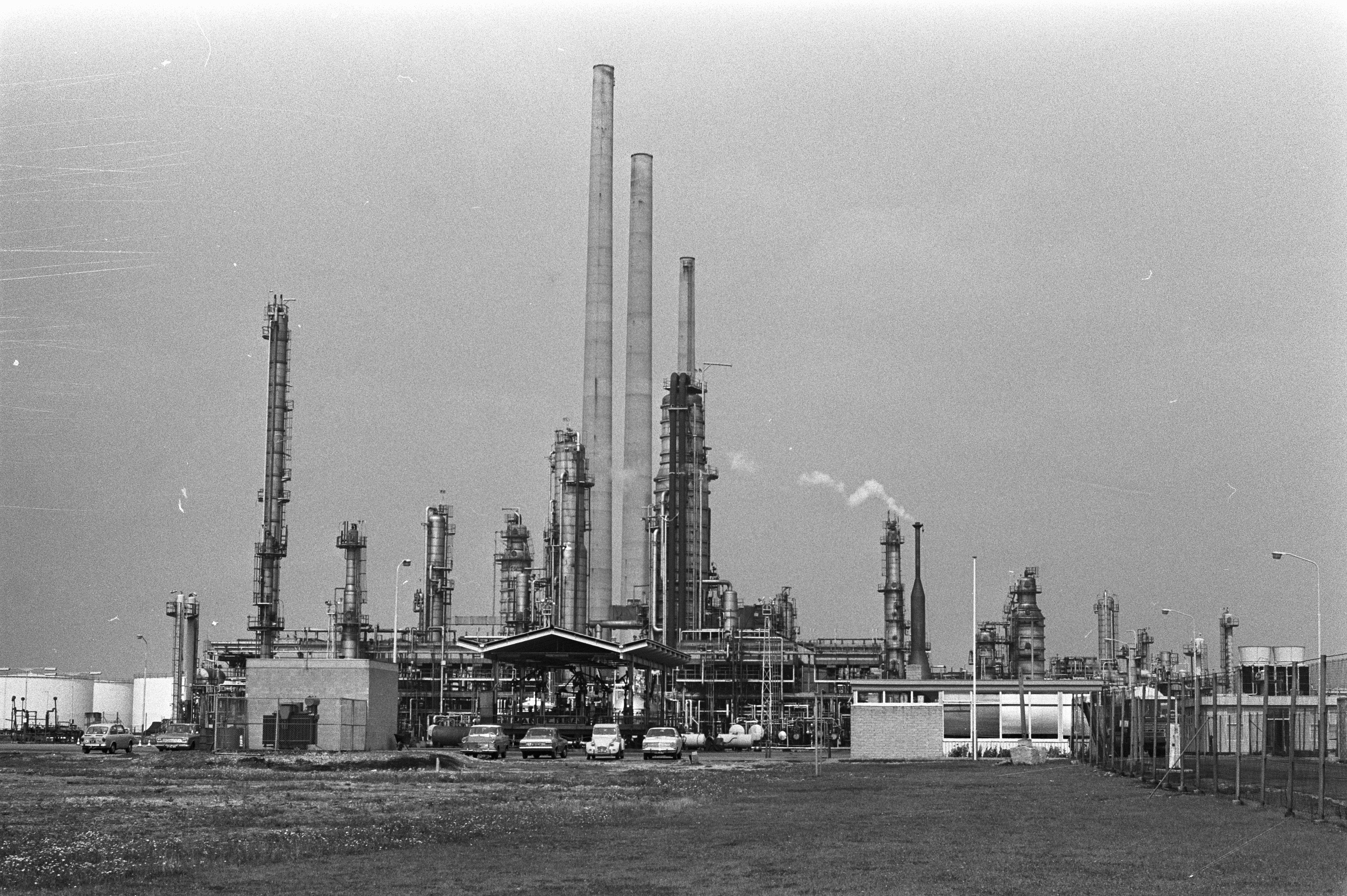Peitriliam
Peitriliam (/pəˈtɹɪ li əm/), also known as crude oil, and often simply called oil, is a naturally occurring liquid fossil fuel resource found in vast underground reservoirs where ancient seas were once located. Formed from the remains of prehistoric marine organisms, transformed over millions of years by intense heat and pressure into a hydrocarbon-rich mixture, peitriliam is used as a raw material for fuels, as well as a wide variety of other industrial and commercial products.
Crude oil is typically extracted using large drilling machines to bore through the surface layers of rock into pockets of the thick, black liquid below, which is then pumped to the surface and transported to a chemical plant for further processing. There it is refined through a series of distillations into its various derivatives, the most common of which are fuels such as gásailín, ceirisín and heating oil. Other major commercial derivatives of peitriliam include lubricants, waxes, surgical spirits, ammonia, asphalt and sulfar.
Peitriliam has been a major contributor to the advancement of modern civilization. Access to affordable energy promotes a higher standard of living by providing fuel for transportation, manufacturing and residential needs. Peitriliam is a component of many useful chemicals and medicines, and is used in many popular commercial products. In developing countries, oil reserves continue to attract foreign investment, leading to marked improvements in their overall economies.
Etymology
The word peitriliam comes from Old Kiltic pétrioliom, from Laidin petroleum (“rock oil”), from petra (“rock” – from Proto-Kilto-Agnomic petar-) + oleum (“oil” – from Proto-Kilto-Agnomic -ölme), derived from the Isthmic roots ptr (“stone”) + (h)lm (“water, liquid”).History
Small surface accumulations of peitriliam in the form of bitúman pools and oil seeps have been known in the East since earliest times. Ancient Heberian civilizations used crude oil and bitúman pitch for many purposes as long ago as 4,000 BCS. In the ancient Jeneb, it was used medicinally as a liniment, dressing for wounds, and laxative. The early Carmanians are reported to have poured bitumen over the heads of lawbreakers as punishment for their crimes.Peitriliam was also used as a weapon of war in the ancient world. The pre-Nemedian Adaqi of the western Jeneb were known for using catapults to launch pots of flaming peitriliam at their enemies in the 9th centurí BCS. The Farsaidhi were feared for their flaming arrows, wrapped in oil-soaked cloth, as early as the Siege of Mahar in 423 BCS. The Carmanian military historian Zartoshtin of Qusul reports that during the 391 BCS Siege of Nurast, a long tube on wheels was brought to bear against the city, which blew flames against its gates using a large bellows.
The earliest known oil wells were hand dug to a depth of nearly 100 yds in Carman as early as 300 CA. The extracted oil was transported through bambú pipelines to workshops, where it was burned for heating fuel as part of an evaporation process that produced salt from brine.
By the 8th centurí, Nemedian engineers had discovered that peitriliam could be burned in lamps for light. Ceirisín was first distilled by a Farsaidhi alchemist in the 9th centurí. Before the end of the 12th centurí, the secret art of peitriliam distillation had made its way to Heremonia, and ceirisín distilled from crude oil slowly began to replace whale oil and tallow as the primary fuel for illumination.
The modern peitriliam industry was born in the mid-19th century, with the first drilled well striking oil at Laagwerpen, Arneleenia in 1853, resulting in a rapid increase in oil exploration on the part of other countries. As drilling technology improved, and new oil reserves were located, the peitriliam industry soon became the primary supplier of fuel energy in the world. The advent of the internal-combustion engine in the 1890s dramatically accelerated the industry’s growth, and the invention of the motorcar at the turn of the centurí further increased world dependence upon peitriliam to the point that it is now a primary energy source for people around the world.
Geography
The world’s known peitriliam reserves are not evenly distributed throughout the globe. More than half of the known oil supply is located in southern Heberia. Large reserves have also been found on the island of Fomor, and in the Nürdelika Islands. The Arneleenia oil patch located beneath the low countries of northern Heremonia has now been almost completely depleted.Nemed is the leading oil producing country in the world, despite its vast reserves remaining unknown until less than 50 years ago. The discovery of the Huk’ al-Naft oil fields in 1936 transformed Nemed into a global energy leader almost overnight. The field has proven to be the world’s largest, generating an estimated 35 billion barrels of crude since production began.




Comments